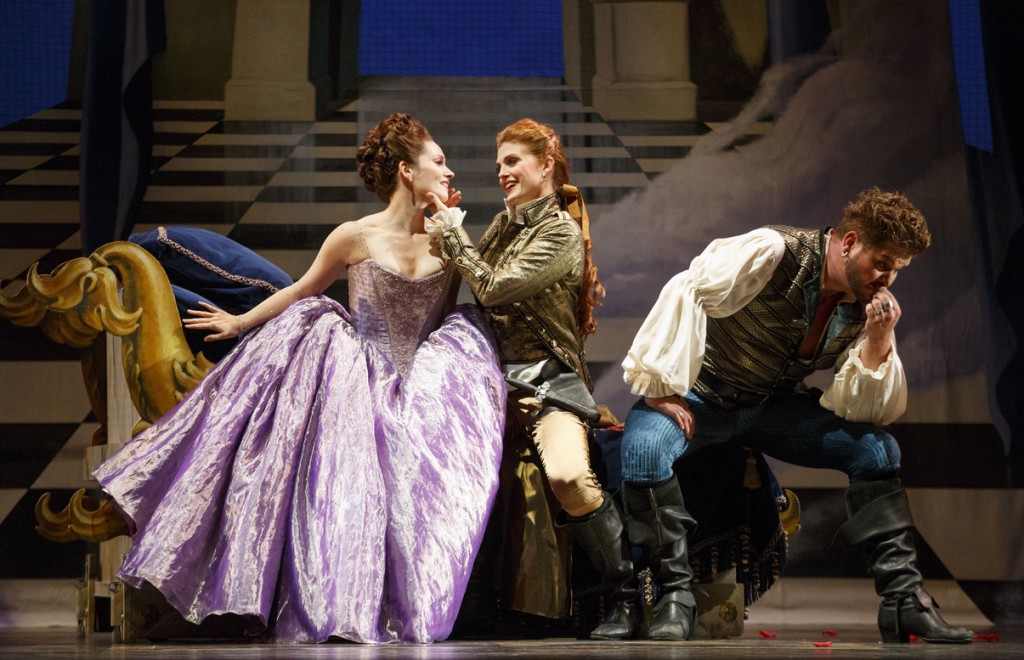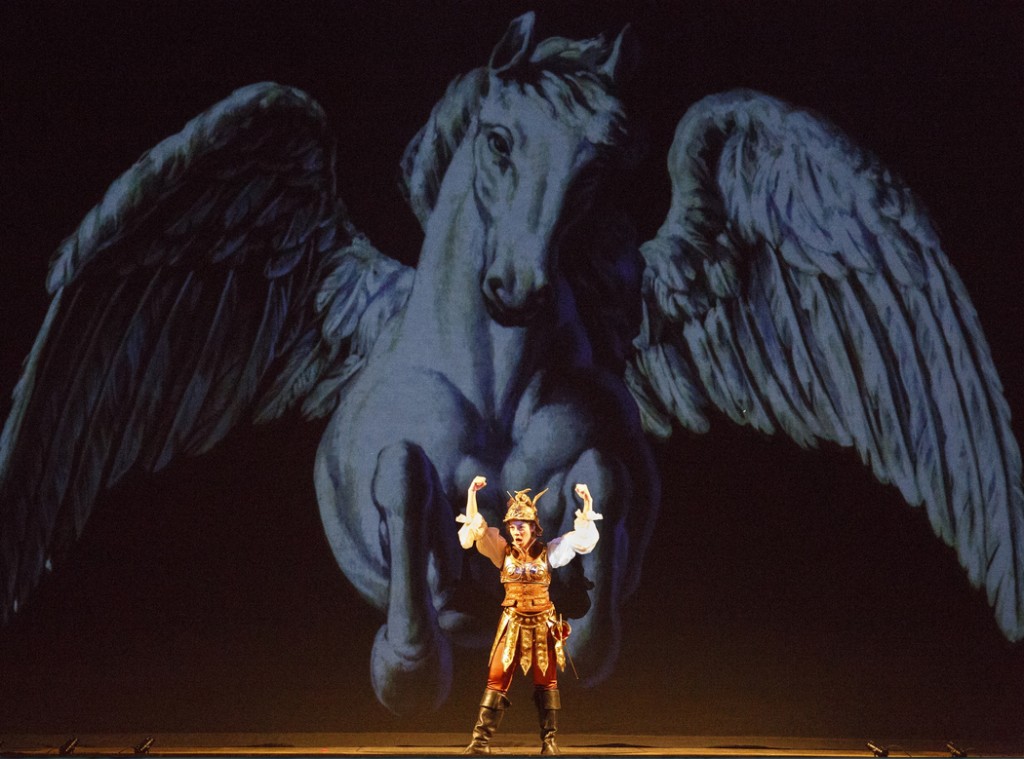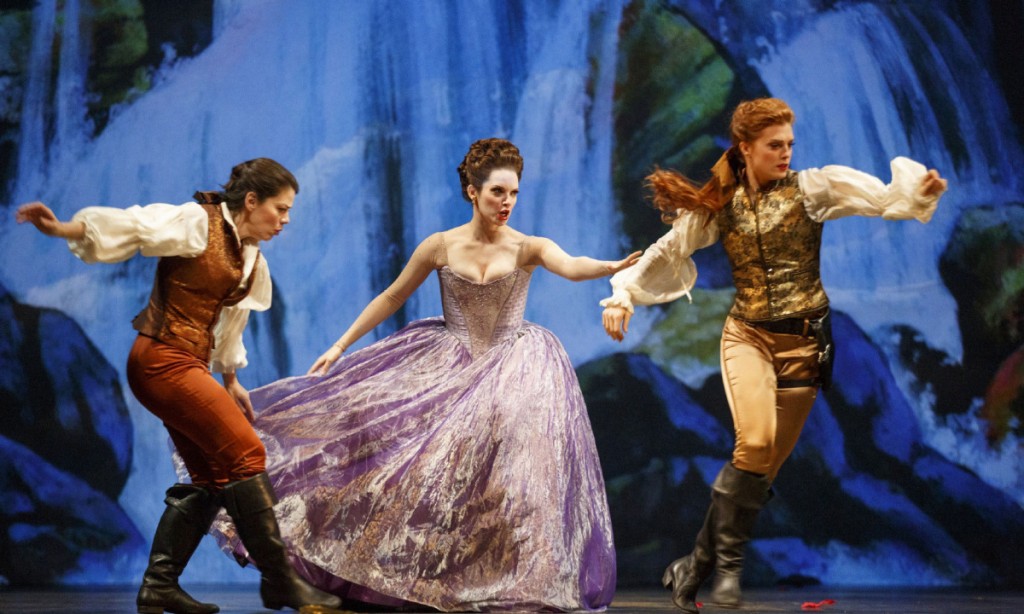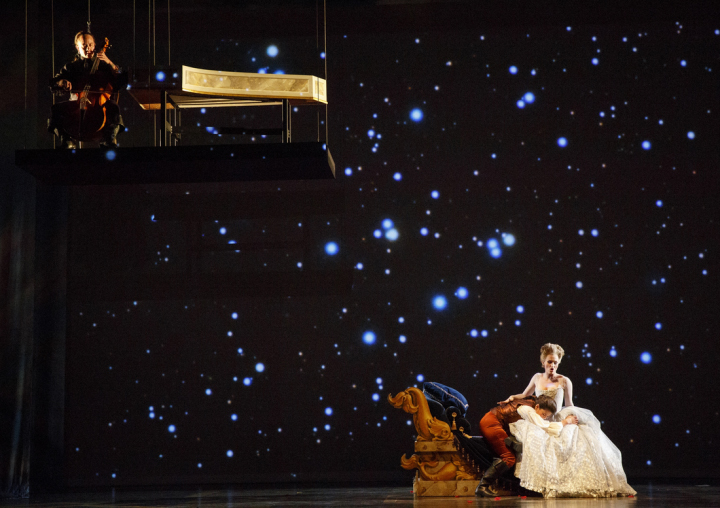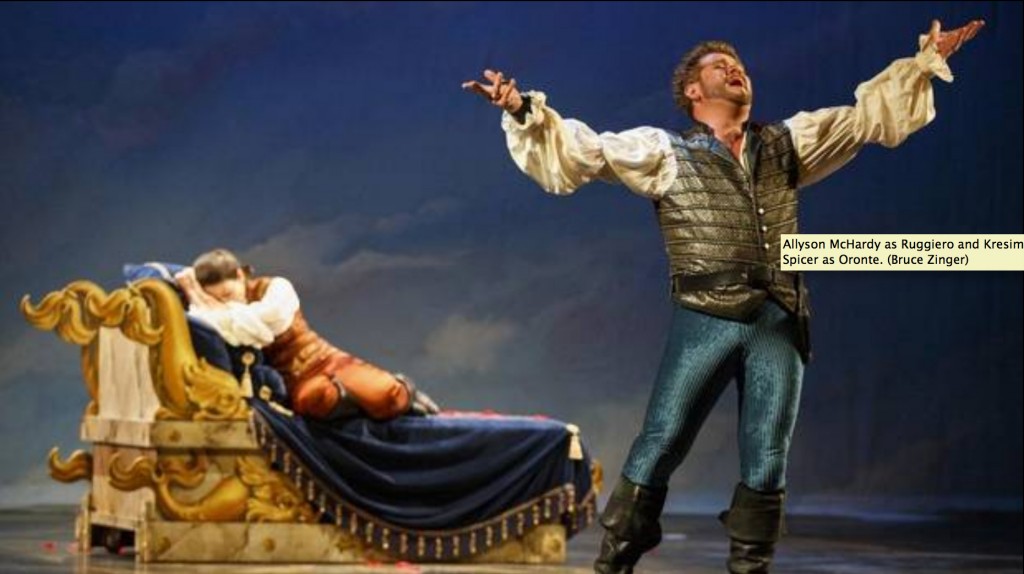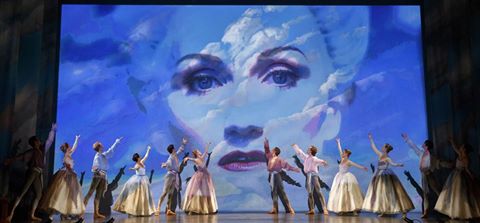
This is 1735, and the plot is slightly drunken, (Handel, after all). The Elgin Theatre’s gilded balconies shimmer as the patrons wander in from the un-seasonably warm October evening, hinting of unease for good opera.
Other than an errant spring in the Theatre’s 100 year-old aging seats, this was Opera Atelier’s night to shine. In a city that adores all things early music (even the Canadian Opera Company has jumped on that bandwagon), it was a sure fire hit – or was it?
Amongst far too many late-comers obstructing sightlines, a confident Marshall Pynkoski arrived and wasted no time being charming. He spoke about the signs placed throughout the theatre’s entrance warning of threatening haze, gratuitous nudity, and strobe lighting.
This was not his university dorm room, he said, but Opera Atelier’s latest restoration rescued from the dusty English university libraries that house so many of Handel’s surviving works.
Besides the signage, one must be warned when attending any Handel opera, especially Alcina. It’s going to be a swishy plot that sways with the wit of a wooden boat. But the music will be divine. Come for the music.
Let’s start with the cast.
With a number of Atelier standbys, including Meghan Lindsay playing the sorceress Alcina, things got off to a fine start. Great care was taken to portray each of the characters with clarity. In particular, Lindsay’s Alcina commanded great feminine power over her island dominion. This was until hubris touched her, and the once conceited ego panics at the thought of her purview crumbling around her.
Allyson McHardy played Ruggiero with a stunning low and warm tessitura – especially for a mezzo-soprano. Mireille Asselin (soprano), played Morgana, Alcina’s sister, who loves for the thrill of it.
Soprano Wallis Giunta was a standout of the evening in her portrayal of Bradamante, Ruggiero’s betrothed, disguised as her own brother, the knight Ricciardo (don’t ask).
Another standout was tenor Krešimir Špicer, as Oronte. He burst onto the stage for each scene with such incredible energy; you couldn’t take your eyes (and ears) off him.
Bass-baritone, Olivier LaQuerre as Melisso was also a steady force, making one wish the character had more stage time.
The music was performed by the Tafelmusik Baroque Orchestra, conducted by the enchanting hand of David Fallis. They were rock steady, and Fallis did an expert job at controlling the choral, orchestral, and singing elements throughout the three-hour production. One qualm had to do with the placement of the duet of baroque horns situated in the house-left lower balcony in the second half, which made them sound too loud against the rest of the orchestra brethren.
The staging, lit terrifically by Bonnie Beecher, was scant and allowed most of the visual energy to be directed to the projections by Ben Shirinian. The stage featured a ‘less is more’ approach, with a single bench, and a house-right balcony acting as a second-floor extension of the stage.
Much of the projected images and film sequences were tied to the Atelier Ballet, who were featured prominently during the many musical sequences. Besides the music, and fine performances by the leads, the most notable aspect of the production, and as Pynkoski and the signage warned us, was the frequent male nudity from the dancers which came perilously close to being gratuitous.
Much of the context behind the nudity was to highlight the subtext behind Alcina, as a sex fiend queen who subjugates her male lovers for their masculine objectivity – but subtle it wasn’t. There were probably about 600 close-ups of men’s backsides in the video projections alone.
The choreography by Jeannette Lajeunesse-Zingg was also heavy with male dancers parading their flipsides in spandex so tight that it became the point of it all. It seemed almost comical.
In the third act, the film backdrop showed Alcina’s objectified men being freed from the Island pokey. Hundreds of svelte nude men rose up like angels, prompting an overheard “Hallelujah, it’s raining men!” I doubt this was the effect that they were going for. Less would have been more.
Besides the wanton nudity and Handel’s silly plot (nothing can be done about that), it was still a successful and daring production.
Opera Atelier’s success rides upon Toronto’s appetite for revival. Where they get it right is their contemporary take on it. It is not about being accurate to the historical “t”. It is about exploring the universality of song and drama, and focusing in on the elements, which might say something about our contemporary lives. While the production has its flaws, it does so many things right and without apology that one can’t help but admire Pynkoski and designer Gerard Gauci’s bold direction of Opera Atelier’s Alcina.
The show runs through 1 November 2014. Details here.
- THE SCOOP | Royal Conservatory’s Dr. Peter Simon Awarded The Order Of Ontario - January 2, 2024
- THE SCOOP | Order of Canada Appointees Announced, Including Big Names From The Arts - December 29, 2023
- Ludwig Van Is Being Acquired By ZoomerMedia - June 12, 2023
- THE SCOOP | Royal Conservatory’s Dr. Peter Simon Awarded The Order Of Ontario - January 2, 2024
- THE SCOOP | Order of Canada Appointees Announced, Including Big Names From The Arts - December 29, 2023
- Ludwig Van Is Being Acquired By ZoomerMedia - June 12, 2023

